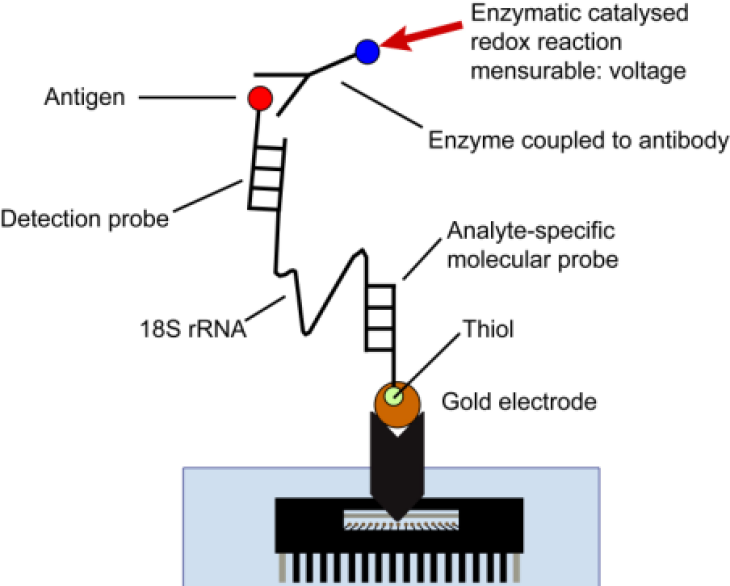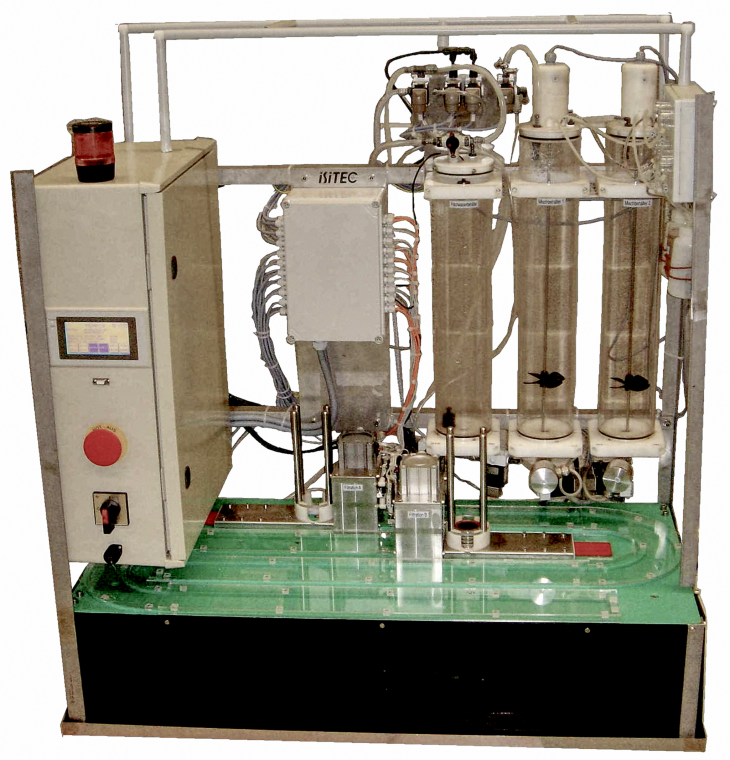Phytoplankton Analysis (Nucleic Acid Biosensor)

Measurement principle of the biosensor. -image: Katja Metfies / AWI-
The surveillance of marine phytoplankton is greatly facilitated by nucleic acid biosensors. At the core of this biosensor is a multiprobe chip that can be used for the simultaneous detection of a variety of algae (sandwich hybridization, figure right). A molecular probe, the detection component, binds to the specific target of interest. In turn, an antibody-enzyme-complex coupled to the signal moiety transforms this detection event into a redox-reaction that can be measured as an electrochemical signal. This technique allows rapid detection and counting of microalgae in complex samples. The main steps are automatically carried out in a portable device.

Automated filtration unit for processing filtered algae prior to detection by the biosensor. -image: iSiTEC GmbH-
The detection principle has already been verified. The main challenge for COSYNA was to construct an automated device that (1) reliably filters sea water in order to concentrate algae cells, (2) ‘cracks’ the cells (lysis) and (3) transports the resulting fluid to the detector.
Such an instrument has been constructed by the Helmholtz-Zentrum Hereon, the Alfred Wegener Institute and the company ISITEC. It was tested during diff erent cruises of RS Polarstern and will be applied routinely in the North Sea.
| algae taxa | algal groups |
